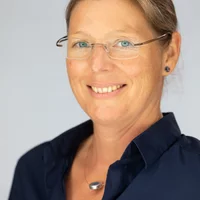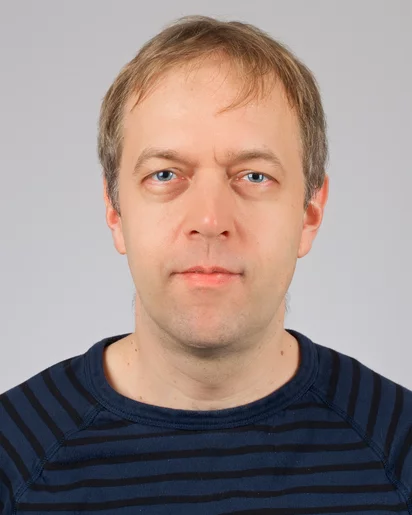Biography
Matthias Muntwiler is a senior scientist in the Laboratory for X-ray Nanoscience and Technologies (LXN), Photon Science Division of the Paul Scherrer Institut. He received his diploma in experimental physics in 2000 and his PhD in 2004 from the University of Zurich, Switzerland, working on photoelectron spectroscopy and photoelectron diffraction of nanostructured magnetic interfaces in the group of Prof. Jürg Osterwalder. Afterwards he spent several years as a post-doctoral fellow and later research associate in the group of Prof. Xiaoyang Zhu, Department of Chemistry, University of Minnesota, Minneapolis, USA, working on time-resolved two-photon photoelectron spectroscopy of ultrafast polaron and exciton dynamics at organic and inorganic interfaces. In 2009, he joined the Laboratory for Synchrotron Radiation and Condensed Matter (LSC) of PSI. In 2017 he moved to the Molecular Nanoscience group of Prof. Thomas A. Jung. In 2004, he co-founded the spin-off company kspace muntwiler+gresch in Zurich which provided consulting and data acquisition software for photoelectron spectroscopy.
Institutional Responsibilities
Matthias Muntwiler designed, constructed and commissioned the PEARL beamline at the Swiss Light Source (SLS) after his move to PSI in 2009. He is currently the beamline manager and supports beamtime projects of users from all Europe.
M. Muntwiler is a member of the Swiss Nanoscience Institute (SNI).
Scientific Research
Since his diploma, Matthias Muntwiler is interested in surfaces and interfaces of organic and inorganic ultrathin films, small molecules adsorbed on metals and semiconductors, organic semiconductors and two-dimensional materials. He is an expert in photoelectron spectroscopy in a broad range from chemical analysis, band mapping, atomic structure analysis to dynamic processes, focussing on structure-property relations of functional surfaces and interfaces.
His side interest in software development have allowed him to develop or integrate sophisticated experiment control systems, efficient data analysis procedures, computational simulation of photoelectron diffraction and structural modelling tools using machine learning techniques.
Selected Publications
Selected publications. A full list of publications is available at Publons and ORCID.
The true corrugation of a h-BN nanomesh layer, L. H. de Lima, T. Greber and M. Muntwiler, 2D Mater. 7, 035006 (2020) 10.1088/2053-1583/ab81ae
Hexagonal boron nitride (h-BN) nanomesh, a two-dimensional insulating monolayer, grown on the (111) surface of rhodium exhibits an intriguing hexagonal corrugation pattern with a lattice constant of 3.2 nm. Despite numerous experimental and theoretical studies no quantitative agreement has been found on some details of the adsorption geometry such as the corrugation amplitude. The issue highlights the differences in chemical and electronic environment in the strongly bound pore regions and the weakly bound wire regions of the corrugated structure. For reliable results it is important to probe the structure with a method that is intrinsically sensitive to the position of the atomic cores rather than the electron density of states. In this work, we determine the corrugation of h-BN nanomesh from angle- and energy-resolved photoelectron diffraction measurements with chemical state resolution. By combining the results from angle and energy scans and comparing them to multiple-scattering simulations true adsorbate-substrate distance can be measured with high precision, avoiding pitfalls of apparent topography observed in scanning probe techniques. Our experimental results give accurate values for the peak-to-peak corrugation amplitude (0.80 Ã
), the bonding distance to the substrate (2.20 Ã
) and the buckling of the boron and nitrogen atoms in the strongly bound pore regions (0.07 Ã
). These results are important for the development of theoretical methods that involve a quantitative description of van der Waals systems as required for the understanding of the physics of two-dimensional sp2 layers.
Spin-resolved electronic structure of ferroelectric α-GeTe and multiferroic Ge_1-xMn_xTe, J. Krempaský, M. Fanciulli, N. Pilet, J. Minár, W. Khan, M. Muntwiler, F. Bertran, S. Muff, A. Weber, V. Strocov, V. Volobuiev, G. Springholz and J. Dil, J. Phys. Chem. Solids 128, 237 (2019) 10.1016/j.jpcs.2017.11.010
Germanium telluride features special spin-electric effects originating from spin-orbit coupling and symmetry breaking by the ferroelectric lattice polarization, which opens up many prospectives for electrically tunable and switchable spin electronic devices. By Mn doping of the α-GeTe host lattice, the system becomes a multiferroic semiconductor possessing magnetoelectric properties in which the electric polarization, magnetization and spin texture are coupled to each other. Employing spin- and angle-resolved photoemission spectroscopy in bulk- and surface-sensitive energy ranges and by varying dipole transition matrix elements, we disentangle the bulk, surface and surface-resonance states of the electronic structure and determine the spin textures for selected parameters. From our results we derive a comprehensive model of the α-GeTe surface electronic structure which fits to experimental data and first principle theoretical predictions and we discuss the unconventional evolution of the Rashba-type spin splitting upon manipulation by external B- and E-fields.
Surface science at the PEARL beamline of the Swiss Light Source, M. Muntwiler, J. Zhang, R. Stania, F. Matsui, P. Oberta, U. Flechsig, L. Patthey, C. Quitmann, T. Glatzel, R. Widmer, E. Meyer, T. A. Jung, P. Aebi, R. Fasel and T. Greber, J. Synchrotron Rad. 24, 354 (2017) 10.1107/S1600577516018646
The Photo-Emission and Atomic Resolution Laboratory (PEARL) is a new soft X-ray beamline and surface science laboratory at the Swiss Light Source. PEARL is dedicated to the structural characterization of local bonding geometry at surfaces and interfaces of novel materials, in particular of molecular adsorbates, nanostructured surfaces, and surfaces of complex materials. The main experimental techniques are soft X-ray photoelectron spectroscopy, photoelectron diffraction, and scanning tunneling microscopy (STM). Photoelectron diffraction in angle-scanned mode measures bonding angles of atoms near the emitter atom, and thus allows the orientation of small molecules on a substrate to be determined. In energy scanned mode it measures the distance between the emitter and neighboring atoms; for example, between adsorbate and substrate. STM provides complementary, real-space information, and is particularly useful for comparing the sample quality with reference measurements. In this article, the key features and measured performance data of the beamline and the experimental station are presented. As scientific examples, the adsorbate{--}substrate distance in hexagonal boron nitride on Ni(111), surface quantum well states in a metal-organic network of dicyano-anthracene on Cu(111), and circular dichroism in the photoelectron diffraction of Cu(111) are~discussed.
Probing the spatial and momentum distribution of confined surface states in a metal coordination network, J. Zhang, A. Shchyrba, S. Nowakowska, E. Meyer, T. A. Jung and M. Muntwiler, Chem. Commun. 50, 12289 (2014) 10.1039/c4cc03941f
An Endohedral Single-Molecule Magnet with Long Relaxation Times: DySc_2N@C_80, R. Westerström, J. Dreiser, C. Piamonteze, M. Muntwiler, S. Weyeneth, H. Brune, S. Rusponi, F. Nolting, A. Popov, S. Yang, L. Dunsch and T. Greber, J. Am. Chem. Soc. 134, 9840 (2012) 10.1021/ja301044p
The magnetism of DySc2N@C80 endofullerene was studied with X-ray magnetic circular dichroism (XMCD) and a magnetometer with a superconducting quantum interference device (SQUID) down to temperatures of 2 K and in fields up to 7 T. XMCD shows hysteresis of the 4f spin and orbital moment in DyIII ions. SQUID magnetometry indicates hysteresis below 6 K, while thermal and nonthermal relaxation is observed. Dilution of DySc2N@C80 samples with C60 increases the zero-field 4f electron relaxation time at 2 K to several hours.
Coulomb Barrier for Charge Separation at an Organic Semiconductor Interface, M. Muntwiler, Q. Yang, W. A. Tisdale and X.-Y. Zhu, Phys. Rev. Lett. 101, 196403 (2008) 10.1103/PhysRevLett.101.196403


